
Cass County is a county located in the U.S. state of Indiana. As of the 2020 United States Census, its population was 37,870. The county seat is Logansport. Cass County comprises the Logansport, IN Micropolitan Statistical Area.

Blackford County is located in the east central portion of the U.S. state of Indiana. The county is named for Judge Isaac Blackford, who was the first speaker of the Indiana General Assembly and a long-time chief justice of the Indiana Supreme Court. Created in 1838, Blackford County is divided into four townships, and its county seat is Hartford City. Two incorporated cities and one incorporated town are located within the county. The county is also the site of numerous unincorporated communities and ghost towns. Occupying only 165.58 square miles (428.9 km2), Blackford County is the fourth smallest county in Indiana. As of the 2020 census, the county's population was 12,112. Based on population, the county is the 8th smallest county of the 92 in Indiana. Although no interstate highways are located in Blackford County, three Indiana state roads cross the county, and an additional state road is located along the county's southeast border. The county has two railroad lines. A north–south route crosses the county, and intersects with a second railroad line that connects Hartford City with communities to the west.

Dunkirk is a city in Blackford and Jay counties in the U.S. state of Indiana. The population was 2,164 at the 2020 census.

Hartford City is a city in the U.S. state of Indiana, and the county seat of Blackford County. Located in the northeast central portion of the state, the small farming community underwent a dramatic 15-year economic boom beginning in the late 1880s. The Indiana Gas Boom resulted from the discovery and exploitation of natural gas in the area. The rural economy was transformed to one that included manufacturing. The boom attracted workers and residents, retail establishments, and craftspeople. The increased population was a catalyst for the construction of roads, schools, and churches. After the boom came a long period of growth and stability. Agriculture remained as the basis for the economy.

Montpelier is a city in Harrison Township, Blackford County, in the U.S. state of Indiana. This small rural community, the county's first to be platted, was established by settlers from Vermont, and is named after Vermont's capital city of Montpelier.
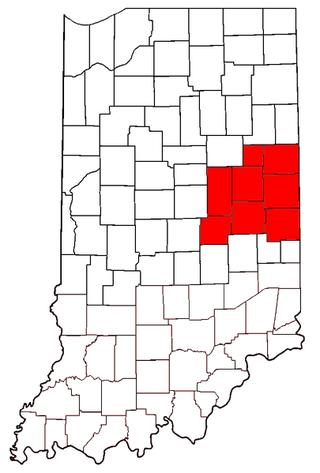
East Central Indiana is a region in Indiana east of Indianapolis, Indiana, and borders the Ohio state line. The Indiana Gas Boom, which took place during the 1890s, changed much of the area from small agricultural communities to larger cities with economies that included manufacturing. Companies such as Ball Corporation and Overhead Door once had their headquarters in the region. Glass manufacturing was the first industry to be widespread in the area, because of the natural gas. As the glass industry faded, many of the skilled workers became employed at auto parts factories in cities such as Muncie and Anderson. With the decline of the American automobile industry, East Central Indiana became part of the Rust Belt. Many communities have been forced to reinvent themselves with a focus on services or a return to agriculture.

Jackson Township is one of four townships in Blackford County, Indiana. As of the 2010 census, its population was 1,354 and it contained 596 housing units. The township was named after Andrew Jackson, the Brevet Major General of the Battle of New Orleans and the seventh President of the United States.

Millgrove is an unincorporated community in Jackson Township, Blackford County, in the U.S. state of Indiana. Nearly all of the community's businesses have been closed for many years. Although the Blackford County Historical Society lists this community as a ghost town, homes are still maintained in the area.
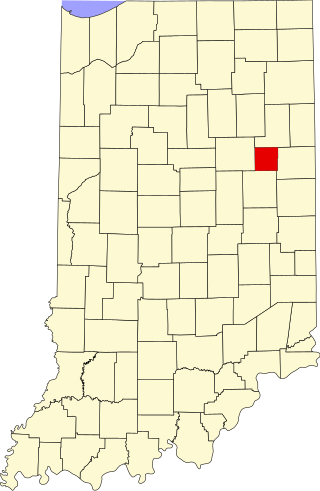
Renner is an extinct American village in Indiana's Blackford County. Although Renner has been listed as a “populated place” by the U.S. Geological Survey, this description is misleading. Renner was a railroad stop on the Pittsburgh, Cincinnati and St. Louis Railroad. The land around the railroad stop was originally used to supply timber for railroad crossties, and eventually became a livestock farm. Housing for the families of the employees of the livestock farm was also located nearby. Although it is not known for certain, Renner is thought to have been named for railroad executive John W. Renner. Renner was an executive of the Pittsburgh, Cincinnati and St. Louis Railroad, and later the Pennsylvania Railroad, and retired with over 50 years of railroad experience. Another community, Rennerdale, Pennsylvania, was named in his honor in 1895.
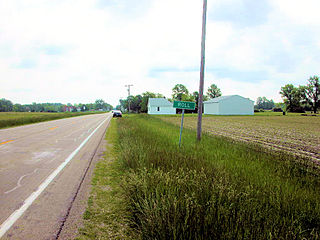
Roll is an unincorporated community in Washington Township, Blackford County, in the U.S. state of Indiana. Nearly all of the community's businesses have been closed for years. Although the Blackford County Historical Society lists Roll as a ghost town, homes are still maintained in the area, and it is still listed as a populated place by the U.S. Geological Survey. The rural community is located on Indiana State Road 18, about one mile west of its intersection with Indiana State Road 3.
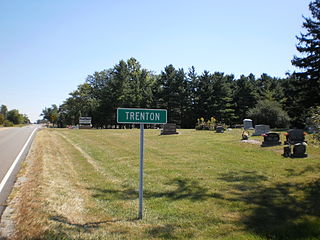
Trenton is an unincorporated town in Jackson Township, Blackford County, in the U.S. state of Indiana. Nearly all of the community's businesses have been closed for many years. Although the Blackford County Historical Society lists this community as a ghost town, homes are still maintained in the area.
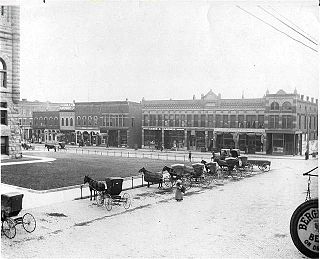
Hartford City, Indiana, began in the late 1830s as a few log cabins clustered near a creek. The community became the county seat of Blackford County. Located in the north east-central portion of the state, the small farming community experienced a 15-year "boom" beginning in the late 1880s caused by the discovery of natural gas. The Indiana Gas Boom caused the community to transition from an agricultural economy to one that also included manufacturing. During the 1890s, Hartford City was the home of the nation's largest window glass company and the nation's largest producer of lantern globes.
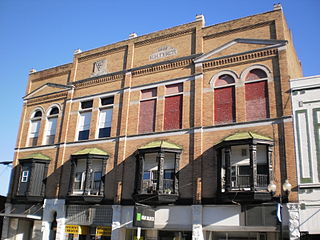
The Hartford City Courthouse Square Historic District is located in Hartford City, Indiana. Hartford City has a population of about 7,000 and is the county seat of Blackford County and the site of the county courthouse. The National Park Service of the United States Department of the Interior added the Hartford City Courthouse Square Historic District to the National Register of Historic Places on June 21, 2006 — meaning the buildings and objects that contribute to the continuity of the district are worthy of preservation because of their historical and architectural significance. The District has over 60 resources, including over 40 contributing buildings, over 10 non-contributing buildings, 1 contributing object, 8 non-contributing objects, and two other buildings that are listed separately in the National Register.

The Blackford County Courthouse is a historic building located in Hartford City, Indiana, the county seat of Blackford County. The building stands on a public square in the city's downtown commercial district. Built during the Indiana Gas Boom, most of the construction work was completed in 1894. The current courthouse was preceded by another courthouse building on the same site, which was declared inadequate by a judge in 1893, and was torn down. Following the condemnation of the original courthouse, the county's judicial activities were temporarily located in a building across the street.

Mollie is an extinct American village in Blackford County, Indiana, that flourished during the Indiana Gas Boom from the 1880s until the 1920s. The region around Mollie experienced an economic "boom" period because of the discovery of gas and crude oil. Mollie was a stop along the Fort Wayne, Cincinnati, and Louisville Railroad—and happened to be near the region's oil fields, a convenient location for the area's oil workers.

This is a timeline and interactive map of Blackford County, Indiana. The timeline (below) lists important events in Blackford County history. An adjacent (right) interactive map contains links to various locations around the county.
Indiana Glass Company was an American company that manufactured pressed, blown and hand-molded glassware and tableware for almost 100 years. Predecessors to the company began operations in Dunkirk, Indiana, in 1896 and 1904, when East Central Indiana experienced the Indiana gas boom. The company started in 1907, when a group of investors led by Frank W. Merry formed a company to buy the Dunkirk glass plant that belonged to the bankrupt National Glass Company. National Glass was a trust for glass tableware that originally owned 19 glass factories including the plant in Dunkirk. National Glass went bankrupt in 1907, and its assets were sold in late 1908.
















